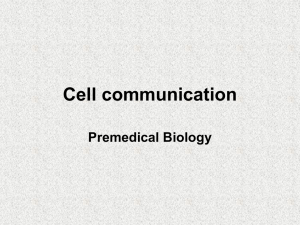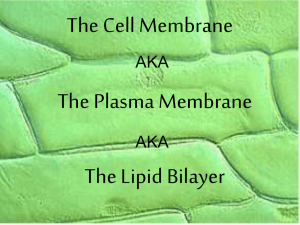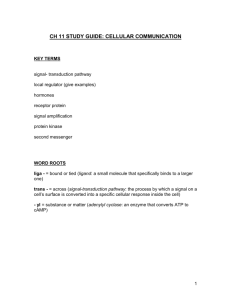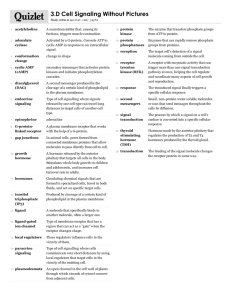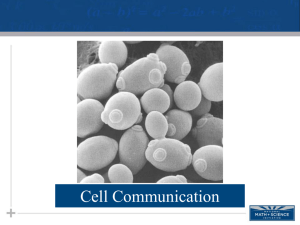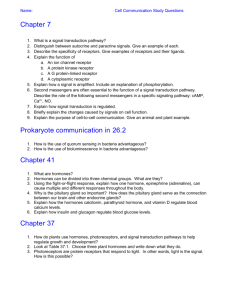cell communication
advertisement
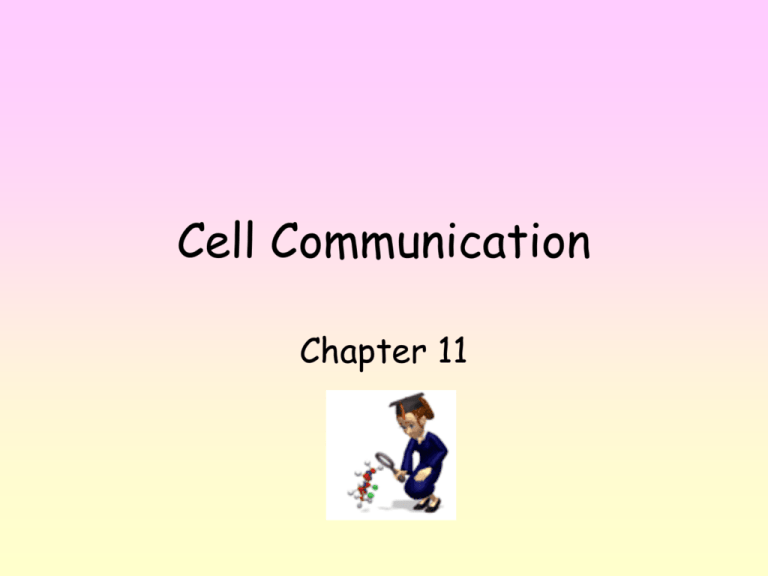
Cell Communication Chapter 11 • Cells need to communicate between themselves to maintain homeostasis. • Process by which signal on cell’s surface converted into specific cellular response consists of series of steps - signal-transduction pathway. http://www.mpi-dortmund.mpg.de/departments/dep1/signaltransduktion/image3.gif • Yeasts communicate between 2 types of yeast cells to reproduce. • 2 sexes, a and alpha - secrete specific signaling molecule, a factor and alpha factor. • Factors find each other and bind to each other’s receptors. • Also occurs in multicellular organisms. • Some cells release local regulators - influence cells in local vicinity. • Synaptic signaling - nerve cell produces neurotransmitter that diffuses to single cell - is almost touching sender. • Nerve signals travel along series of nerve cells without unwanted responses from other cells. • Plants, animals - hormones to signal at greater distances. • Cells may communicate by direct contact. • Signaling substances dissolved in cytosol pass freely between adjacent cells. • 3 stages to signal transduction. • 1Reception - chemical signal binds to cellular protein at cell’s surface. • 2Transduction - binding leads to change in receptor that triggers series of changes along signaltransduction pathway. • 3Response - transduced signal triggers specific cellular activity. • Receptor proteins present on cells to recognize signal molecules. • Ligand - molecule that binds to another molecule, causes cell to change shape when attached to cell’s receptor. • Receptors usually found on plasma membrane since signals can’t pass through membrane. http://www.slic2.wsu.edu:82/hurlbert/micro101/images/lock_key.gif • 1 type - G-protein-linked-receptor. • Acts as on/off switch; cycles between being active and inactive. • Tyrosine-kinase receptor system helps different systems to function at same time. • System activated - activates other systems at same time. • Ligand-gated ion channels open/close to allow chemical signals to pass through. • Important in nervous system - allow Na+ and K+ move into and out of cell. http://dir.niehs.nih.gov/dirln/diricp/figures/overview.jpg • Some signals diffuse through plasma membrane; don’t need proteins. • Some are hormones which act on transcription process. • Transduction stage of signal pathway allows for small signal to be amplified - causes large signal. • Protein kinases essential - help to initiate responses. • Some involve 2nd messengers molecules small enough to pass through membrane. http://www.du.edu/~kinnamon/3640/second_messengers/levitan11.2.jpg • Response of particular cell to signal depends on particular collection of proteins. • Some pathways actually linked by scaffolding proteins - allows signals to be passed through pathways. http://www.bnl.gov/bnlweb/pubaf/pr/photos/2004/DNAbinding-300.jpg • All proteins involved in signal pathway important - defects in any can cause abnormal signals.



